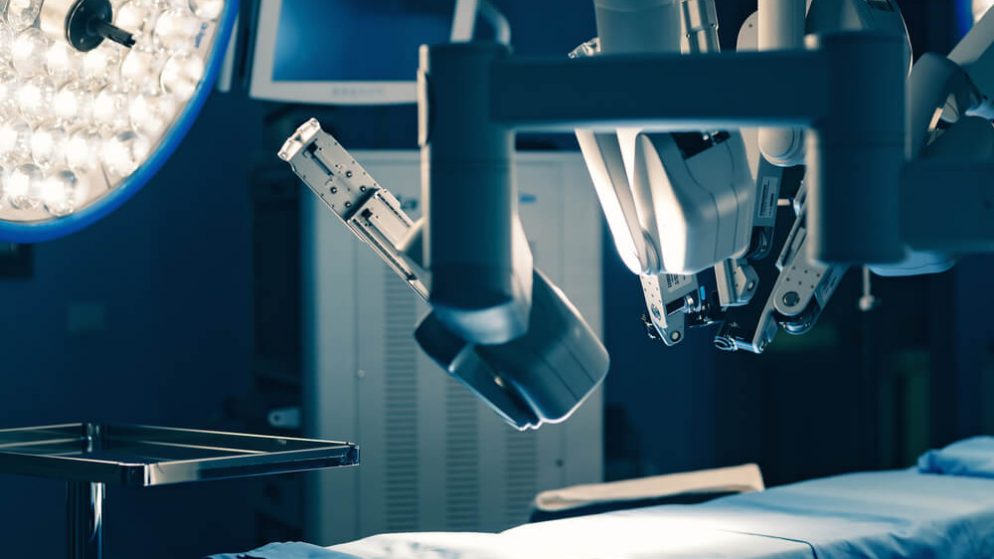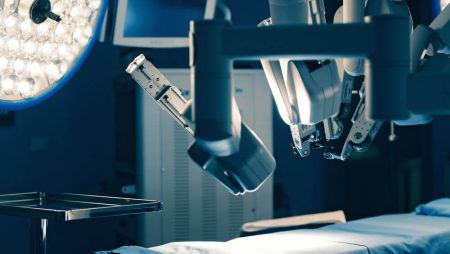



Get new exclusive access to healthcare business reports & breaking news




Max Super Speciality Hospital (MSSH), which is located in Vaishali, Uttar Pradesh announced the latest robot-assisted surgery technology, Da Vinci Xi, which was developed by U.S. company Intuitive. The Indian hospital hopes the new technology will help reduce cases of post surgery complications and will reduce hospital stay for patients.
The Da Vinci Xi Surgical Robot enables surgeons to perform complex surgeries with increased precision and flexibility under various disciplines such as oncology, urology, minimal access, bariatric and robotic surgery, gynecology, general surgery, and thoracic surgery among others.
“We are happy to bring robotic surgery for kidney transplants in UP for the first time. We hope that this is a good start to robotic surgeries in the state, and this will go a long way in availing new age surgical technology for people in this part of the country without having to travel to nearby metros like Delhi,” said Anant Kumar, chairman of urology, robotics and renal transplant, MSSH Vaishali.
Unit head Pinak Moudgil reiterated that the Da Vinci Xi “will immensely benefit our patients by reducing hospital stay and ensuring faster recovery.”
Robotic Surgery uses robotic systems to aid surgical procedures. During an operative procedure, the surgeon sits at a control console and observes the operative field through a video monitor and manually controls the robotic arms, which replicate the hand movement of the surgeon.
This procedure makes tiny and keyhole incisions through which a camera and surgical instruments are placed. The precision is ideal for use in complex surgeries because it would allow surgeons to avoid nerves and organs. These small incisions allow the patient to resume his normal activities. In addition, there is less blood loss which helps the patients to regain strength and stamina over a period of time.
The Da Vinci vision system also delivers highly magnified, 3D high-definition views of the surgical area. The instrument size makes it possible for surgeons to operate through one or a few small incisions.
Gaurav Aggarwal, Senior Vice President – Operations at Max Hospital Vaishali, said: “The installation will help to get better clinical outcomes in kidney surgeries, urological reconstructive surgeries, gallbladder removal, prostate removal, bariatric surgery, abdominal wall reconstruction, fibroids removal, urinary incontinence, thoracic surgery, ENT surgery as well.”
Mandeep Singh Kumar, Vice President and General Manager at Intuitive India, said: “We are encouraged to see an increasing number of healthcare providers keen to invest in Robotic-Assisted Surgery, particularly Da Vinci, in order to improve clinical outcomes and enhance both the care team and patient experience. The recent installation of Da Vinci systems at the Max Health centers in Patparganj and Shalimar Bagh demonstrates our customers’ growing faith in the value of our technology and drives us forward in our mission of the Quadruple Aim.”
Just recently, it was announced that the Groote Schuur Hospital in South Africa was set to become the first public-sector hospital in Africa to offer robot-assisted surgery, following the launch of the Da Vinci Xi surgical system.
Atrium Health Wake Forest Baptist Lexington Medical Center has also installed the Da Vinci Xi Surgical System, allowing the hospital to offer robotic-assisted surgeries.
In 2000, the U.S. Food and Drug Administration approved the Da Vinci system to perform certain general surgical procedures, such as gallbladder removal and anti-reflux surgery. Since then, the FDA has cleared the Da Vinci robot to perform more procedures.
Technological advancements are increasingly becoming key in improving the U.S. health system, with advancements in telehealth and the adoption of people-centered approaches in health care.